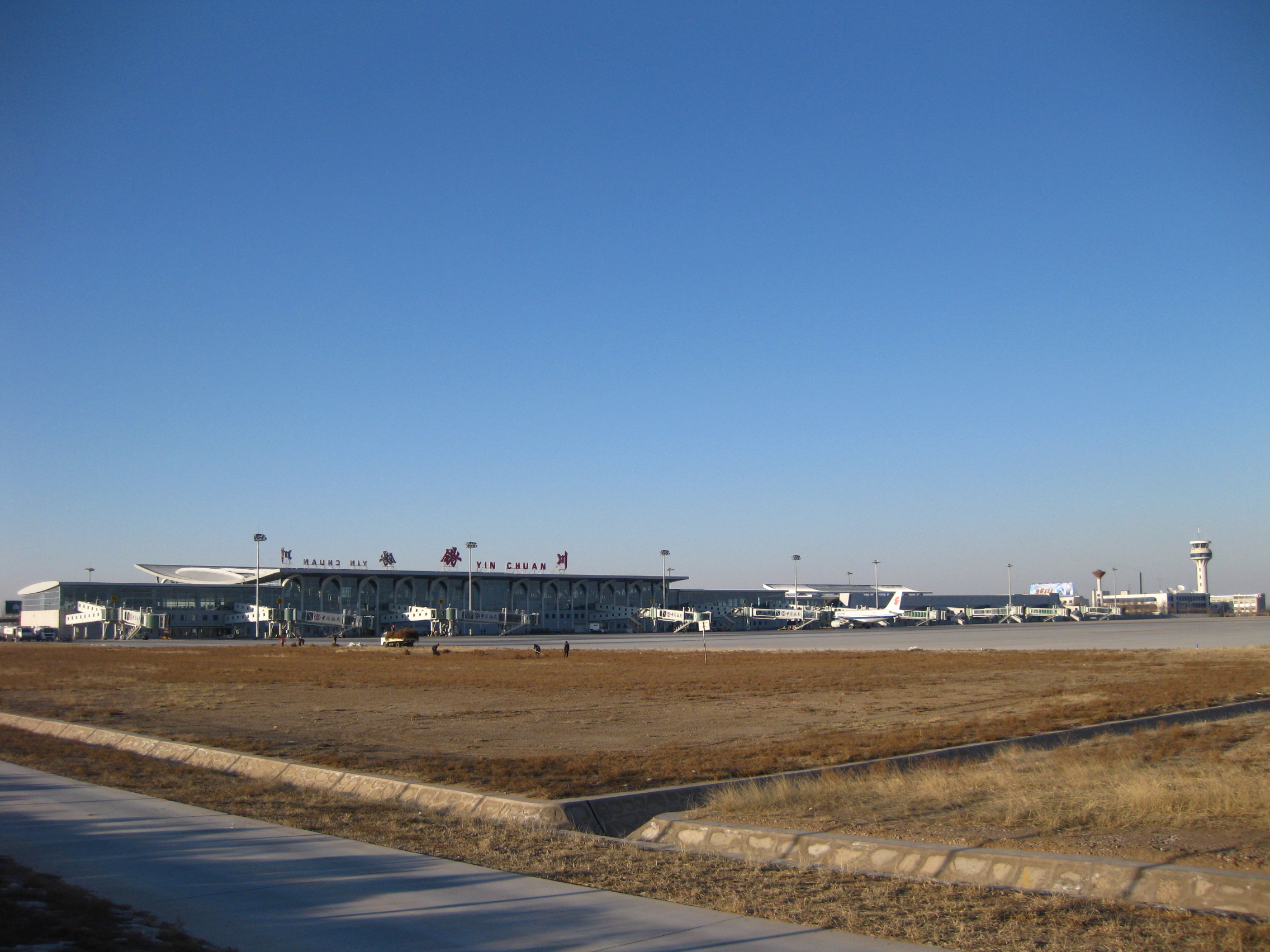|
Yaodong
A yaodong (窰 in native Jin Chinese, or 窰洞 ''yáodòng'' in Beijing Mandarin) is a particular form of Earth sheltering, earth shelter dwelling common in the Loess Plateau in China's north. They are generally carved out of a hillside or excavated horizontally from a central "sunken courtyard". The earth that surrounds the indoor space serves as an effective insulator, keeping the inside of the structure warm in cold seasons and cool in hot seasons. Consequently, very little heating is required in winter, and in summer, it is as cool as an air-conditioned room. The history of yaodongs goes back centuries, and they continue to be used. As of the early 2000s, between 30 and 40 million people in northern China still lived in yaodongs, a number rapidly decreasing as millions move to more modern dwellings nearby or move away as part of urbanization in China. Types The landscape of the Loess Plateau terrain is very complicated, with valleys, slopes, ridges, and hillocks. In ... [...More Info...] [...Related Items...] OR: [Wikipedia] [Google] [Baidu] |
1556 Shaanxi Earthquake
The 1556 Shaanxi earthquake ( Postal romanization: ''Shensi''), known in Chinese colloquially by its regnal year as the Jiajing Great Earthquake "" ('' Jiājìng Dàdìzhèn'') or officially by its epicenter as the Hua County Earthquake "" ('' Huàxiàn Dìzhèn''), occurred in the early morning of 2 February 1556 in Huaxian, Shaanxi, during the Ming dynasty. Most of the residents there lived in yaodongs—artificial caves in loess cliffs—which collapsed and buried alive those sleeping inside. Modern estimates by China Earthquake Administration's publications put the direct deaths from the earthquake at roughly 100,000, while over 700,000 either migrated away or died from famine and plagues, which summed up to a total reduction of 830,000 people in Imperial '' hukou'' registration.颤抖的地球—地震科学'' (2005). Researched by China Earthquake Administration seismologists 冯万鹏,薑文亮,龚丽霞,公茂盛,胡进军; Revised by CEA seismologists 王文清,� ... [...More Info...] [...Related Items...] OR: [Wikipedia] [Google] [Baidu] |
1976 Tangshan Earthquake
The 1976 Tangshan earthquake () was a 7.6 earthquake that hit the region around Tangshan, Hebei, China, at 3:42 a.m. on 28 July 1976. The maximum intensity of the earthquake was XI (''Extreme'') on the Mercalli intensity scale, Mercalli scale. In minutes, 85 percent of the buildings in Tangshan collapsed or were rendered unusable, all services failed, and most of the highway and railway bridges collapsed or were seriously damaged. The official count stated 242,469 deaths, while historians accepted at least 300,000 died, making it the Lists of earthquakes#Deadliest earthquakes, deadliest earthquake in recorded history (excluding the famine deaths from the 1556 Shanxi earthquake) and one of the worst list of disasters in China by death toll, disasters in China by death toll. Earthquakes The earthquake sequence comprised two shocks with magnitudes of at least 7.0. The first struck at 3:42:55 in the morning (local time), approximately under the southern part of Tangshan.. The ... [...More Info...] [...Related Items...] OR: [Wikipedia] [Google] [Baidu] |
Earth Sheltering
An earth shelter, also called an earth house, earth-bermed house, earth-sheltered house, earth-covered house, or underground house, is a structure (usually a house) with earth (soil) against the walls and/or on the roof, or that is entirely buried underground. Earth acts as thermal mass, making it easier to maintain a steady indoor air temperature and therefore reduces energy costs for heating or cooling. Earth sheltering became relatively popular after the mid-1970s, especially among environmentalists. However, the practice has been around for nearly as long as humans have been constructing their own shelters. Definition * "Earth-sheltering is ../nowiki> a generic term with the general meaning: building design in which soil plays an integral part." [...More Info...] [...Related Items...] OR: [Wikipedia] [Google] [Baidu] |
Shaanxi
Shaanxi is a Provinces of China, province in north Northwestern China. It borders the province-level divisions of Inner Mongolia to the north; Shanxi and Henan to the east; Hubei, Chongqing, and Sichuan to the south; and Gansu and Ningxia to the west. Shaanxi covers an area of over with about 37 million people, the 16th-largest in China. Xi'anwhich includes the sites of the former capitals Fenghao and Chang'anis the provincial capital and largest city in Northwest China and also one of the oldest cities in China and the oldest of the Historical capitals of China, Four Ancient Capitals, being the capital for the Western Zhou, Western Han, Sima Jin, Jin, Sui dynasty, Sui and Tang dynasty, Tang List of Chinese dynasties, dynasties. Xianyang, which served as the capital of the Qin dynasty (221–206 BC), is just north across the Wei River. The other Prefectures of China, prefecture-level prefecture-level city, cities into which the province is divided are Ankang, Baoji, Hanzho ... [...More Info...] [...Related Items...] OR: [Wikipedia] [Google] [Baidu] |
Yan'an
Yan'an; ; Chinese postal romanization, alternatively spelled as Yenan is a prefecture-level city in the Shaanbei region of Shaanxi Province of China, province, China, bordering Shanxi to the east and Gansu to the west. It administers several counties, including Zhidan County, Zhidan (formerly Bao'an), which served as the headquarters of the Chinese Communist Party (CCP) before the city of Yan'an proper took that role. Yan'an was near the endpoint of the Long March, and became the center of the Chinese Communist Revolution from late 1935 to early 1947. Chinese communists celebrate Yan'an as the birthplace of the revolution. As of 2019, Yan'an has approximately 2,255,700 permanent residents. History Yan'an was populated at least as early as the Xia dynasty, when it formed part of . The area was not part of the subsequent Shang dynasty, and was instead inhabited by the Guifang, who fought against the Shang dynasty. The area was later inhabited by the Quanrong and the Xianyun dur ... [...More Info...] [...Related Items...] OR: [Wikipedia] [Google] [Baidu] |
Sui Dynasty
The Sui dynasty ( ) was a short-lived Dynasties of China, Chinese imperial dynasty that ruled from 581 to 618. The re-unification of China proper under the Sui brought the Northern and Southern dynasties era to a close, ending a prolonged period of political division since the War of the Eight Princes. The Sui endeavoured to rebuild the country, re-establishing and reforming many imperial institutions; in so doing, the Sui laid much of the foundation for the subsequent Tang dynasty, who after toppling the Sui would ultimately preside over golden ages of China, a new golden age in Chinese history. Often compared to the Qin dynasty (221–206 BC), the Sui likewise unified China after a prolonged period of division, undertook wide-ranging reforms and construction projects to consolidate state power, and collapsed after a brief period. The dynasty was founded by Emperor Wen of Sui, Yang Jian (Emperor Wen), who had been a member of the military aristocracy that had developed in ... [...More Info...] [...Related Items...] OR: [Wikipedia] [Google] [Baidu] |
1920 Haiyuan Earthquake
The 1920 Haiyuan earthquake () occurred on December 16 in Haiyuan County, Ningxia Province, Republic of China at 19:05:53. It was also called the 1920 Gansu earthquake because Ningxia was a part of Gansu Province when the earthquake occurred. It caused destruction in the Lijunbu- Haiyuan-Ganyanchi area and was assigned the maximum intensity on the Mercalli intensity scale (XII ''Extreme''). Estimates of the death toll range from 258,707 to 273,407, making it one of the deadliest earthquakes in China and disasters in China by death toll. Tectonic setting Major left-lateral strike-slip structures occur in the Tibetan Plateau as a result of the India–Asia collision. These faults, including the Altyn Tagh, Haiyuan, Kunlun, Karakoram and Xianshuihe faults, accommodate crustal deformation within the Tibetan Plateau. One of these fault systems, the Haiyuan Fault, runs along the plateau's northeastern edge. Earthquake The earthquake hit at 19:05:53 Gansu-Sichuan time (12:05:53 UT ... [...More Info...] [...Related Items...] OR: [Wikipedia] [Google] [Baidu] |
Adobe
Adobe (from arabic: الطوب Attub ; ) is a building material made from earth and organic materials. is Spanish for mudbrick. In some English-speaking regions of Spanish heritage, such as the Southwestern United States, the term is used to refer to any kind of earthen construction, or various architectural styles like Pueblo Revival or Territorial Revival. Most adobe buildings are similar in appearance to cob and rammed earth buildings. Adobe is among the earliest building materials, and is used throughout the world. Adobe architecture has been dated to before 5,100 BP. Description Adobe bricks are rectangular prisms small enough that they can quickly air dry individually without cracking. They can be subsequently assembled, with the application of adobe mud to bond the individual bricks into a structure. There is no standard size, with substantial variations over the years and in different regions. In some areas a popular size measured weighing about ; in other ... [...More Info...] [...Related Items...] OR: [Wikipedia] [Google] [Baidu] |
Qingyang, Gansu
Qingyang ( zh, s=庆阳 , t=慶陽 , p=Qìngyáng) is a prefecture-level city in eastern Gansu province, China. Geography and climate Qingyang is the easternmost prefecture-level division of Gansu and is thus sometimes referred to as "Longdong" ( zh, c=陇东, p=Lǒng dōng). It forms an administrative peninsula, as it is surrounded, on all sides but the south, by Shaanxi and Ningxia. It is in the lower middle part of the Yellow River on the ''loess'' plateau and is within the eastern Gansu basin. Elevation ranges from 885 to 2082 meters above sea-level. There are 5 major rivers in Qingyang including the Malian River, Malian (马莲河 zh, p=Mǎliánhé) , Pu River, Pu (蒲河 zh, p=Púhé), Hong River (Huai River), Hong (洪河 zh, p=Hóng hé), Xilang River, Xilang (四郎河 zh, p=Sìláng hé), and Hulu or "Gourd" (葫芦河 zh, p=Húlu hé). Their combined annual flow is more than 800million cubic meters. Bordering prefecture-level cities are: Shaanxi: *Yulin, Shaanxi, Yuli ... [...More Info...] [...Related Items...] OR: [Wikipedia] [Google] [Baidu] |
Ningxia
Ningxia, officially the Ningxia Hui Autonomous Region, is an autonomous region in Northwestern China. Formerly a province, Ningxia was incorporated into Gansu in 1954 but was later separated from Gansu in 1958 and reconstituted as an autonomous region for the Hui people, one of the 56 officially recognised nationalities of China. Twenty percent of China's Hui population lives in Ningxia. Ningxia is bounded by Shaanxi to the east, Gansu to the south and west and Inner Mongolia Autonomous Region to the north and has an area of around . This sparsely settled, mostly desert region lies partially on the Loess Plateau and in the vast plain of the Yellow River and features the Great Wall of China along its northeastern boundary. Over about 2000 years, an extensive system of canals (with a total length of approximately 1397 kilometers) has been built from Qin dynasty. Extensive land reclamation and irrigation projects have made increased cultivation possible. The arid region of Xihaig ... [...More Info...] [...Related Items...] OR: [Wikipedia] [Google] [Baidu] |
Gansu
Gansu is a provinces of China, province in Northwestern China. Its capital and largest city is Lanzhou, in the southeastern part of the province. The seventh-largest administrative district by area at , Gansu lies between the Tibetan Plateau, Tibetan and Loess Plateau, Loess plateaus and borders Mongolia's Govi-Altai Province, Inner Mongolia and Ningxia to the north, Xinjiang and Qinghai to the west, Sichuan to the south and Shaanxi to the east. The Yellow River passes through the southern part of the province. Part of Gansu's territory is located in the Gobi Desert. The Qilian Mountains, Qilian mountains are located in the south of the Province. Gansu has a population of 26 million, ranking List of Chinese administrative divisions by population, 22nd in China. Its population is mostly Han Chinese, Han, along with Hui people, Hui, Dongxiangs, Dongxiang and Tibetan people, Tibetan minorities. The most common language is Mandarin. Gansu is among the poorest administrative divi ... [...More Info...] [...Related Items...] OR: [Wikipedia] [Google] [Baidu] |








